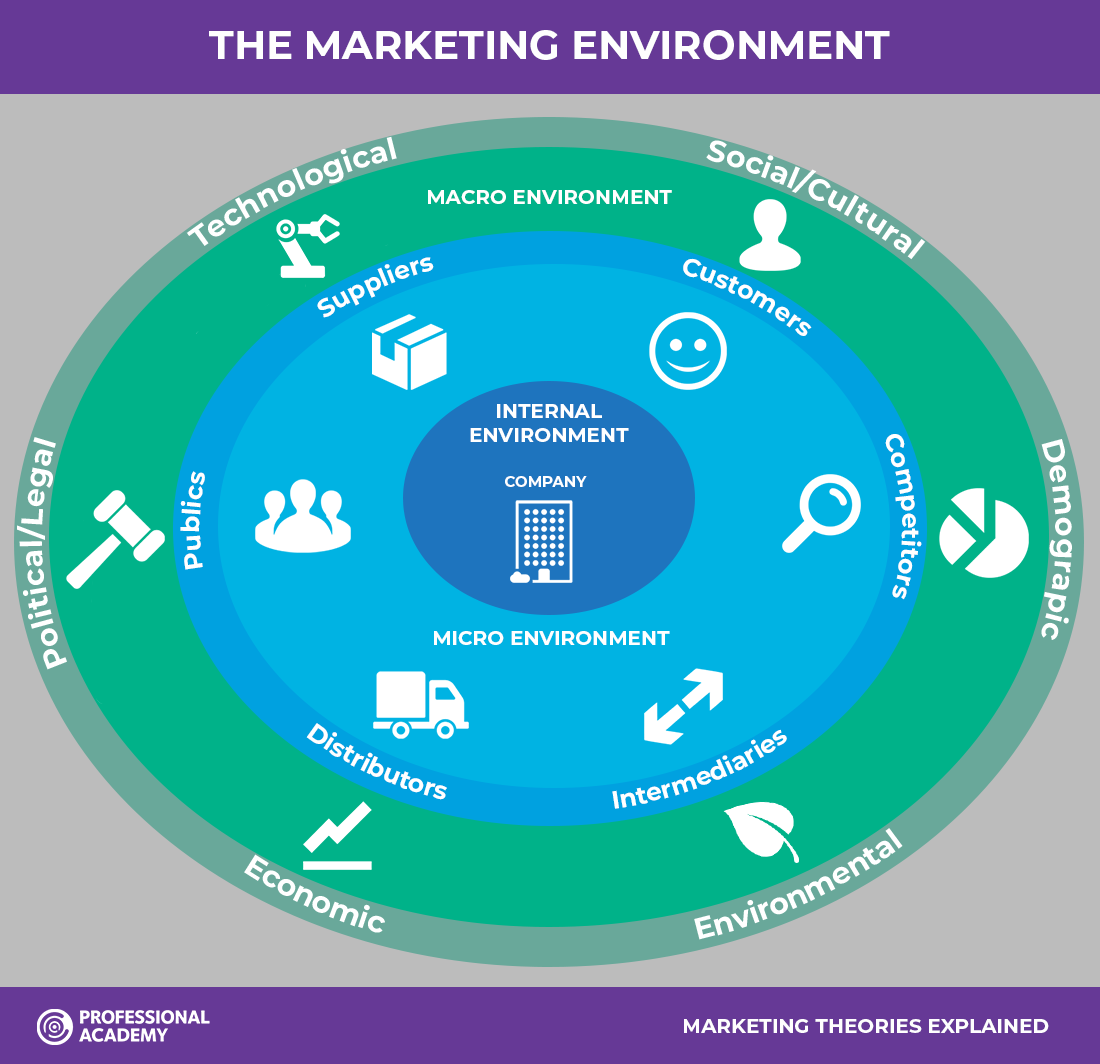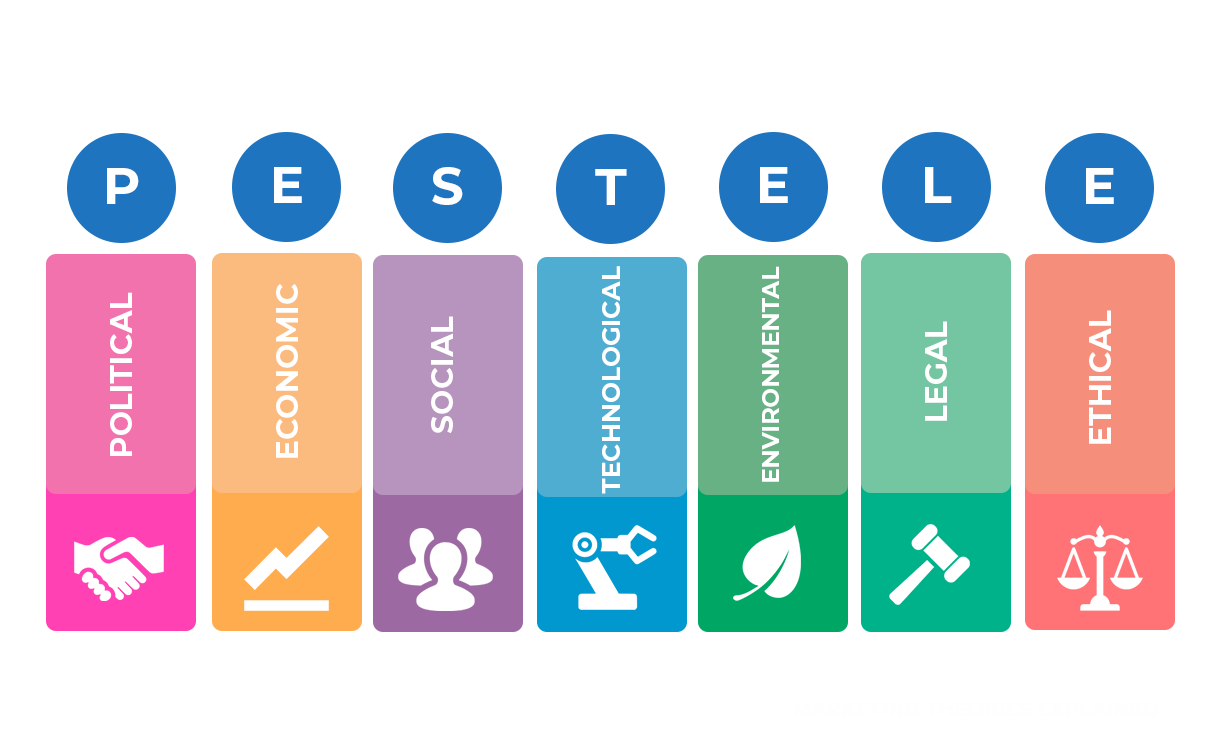

Visit our Marketing Theories Page to see more of our marketing buzzword busting blogs.
Welcome to the Professional Academy Marketing Theories series. This post will cover The Marketing Environment. The marketing environment is considered as part of the marketing planning process and explores various internal and external forces that might affect a business and its capacity to operate. This can be anything from technological and cultural forces to influences such as suppliers, customers and competitors.
Some of these factors are manageable but others can be beyond a firm’s control (e.g. legal and political structures). Being aware of the marketing environment means companies can effectively map out their marketing activity to overcome any negative influences they might encounter.

The internal environment considers everything inside of the bounds of the company. This includes staff at all levels and from all departments, financial and management decisions / influences and more. Factors in the internal environment can be controlled by the organisation.
Examples:
A change in the internal environment could include a new hire or a change in company policy.
This is everything within the firm’s immediate reach. They are forces associated with how the company operates day-to-day and the business has some control over these areas.
Examples:
The macro environment refers to influences in wider society. These factors can impact the micro environment and an organisation is unable to control them. Businesses must choose areas to focus on that are most relevant to their organisation and the way they operate.
A PESTELE framework can be used to analyse the forces within the macro environment. This is an extension of the PESTEL model and includes the extra E (ethical) to take into consideration areas such as confidentiality and business ethics.
A change in the macro environment could be a new law affecting businesses, technological breakthroughs, a recession, austerity or a large spike in unemployment.

Social/Cultural: demographics, population growth/decline, age distribution, education, cultural differences, lifestyle trends, health and welfare, career attitudes
Technological: new innovation, big data, Internet of things, automation, research, tech awareness, technological growth, skilled resources, smart phones, advanced AI, tracking, location data
Economic: national and international economic growth/decline, exchange rates, interest rates, inflation, purchasing power, employment rates, income, investment opportunities
Ethical: bribery, intellectual property, reputation, business ethics/morals, confidentiality, privacy
Political: government policy, taxation, political stability, foreign trade, trade restrictions
Legal: court system, employment law, discrimination law, anti-trust law, trade unions, consumer protection, health & safety, copyright law, GDPR
Environmental: weather, climate change, emissions, environmental policies, pressure from NGO's, natural disasters
At Professional Academy The Marketing Environment is taught across all of our marketing qualifications and first included as part of the CIM Foundation Certificate in Professional Marketing. It is also featured in some way across higher level CIM marketing qualifications. It is a fundamental aspect of marketing plans, alongside the PESTEL analysis, RABOSTIC, Stakeholder Mapping and the SWOT model, and is an incredibly useful tool to examine internal and external forces which may influence your business.
For more information on Professional Academy’s Marketing Qualifications please download a Prospectus today.
If you would like help referencing this blog, check out our Harvard Referencing Blog.